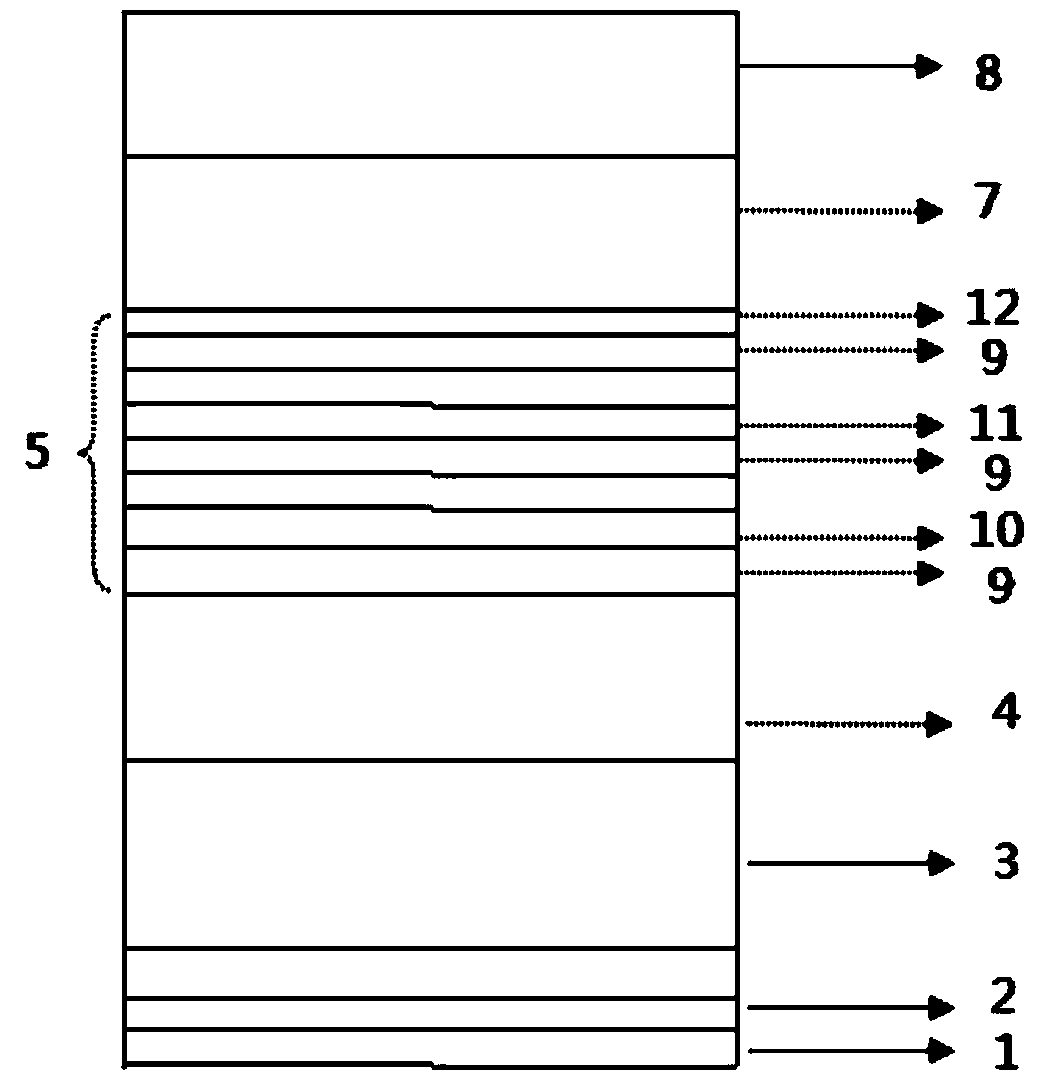Epitaxial growth method and structure of light-emitting diode (LED) structure including potential barrier with gradually-varied thickness
A technology of LED structure and epitaxial growth, applied in electrical components, circuits, semiconductor devices, etc., can solve the problems affecting LED light efficiency, uneven distribution of electrons and holes, etc., to improve LED light efficiency, reduce resistance, improve The effect of resistance
- Summary
- Abstract
- Description
- Claims
- Application Information
AI Technical Summary
Problems solved by technology
Method used
Image
Examples
Embodiment 1
[0042] The invention uses Aixtron MOCVD to grow high-brightness GaN-based LED epitaxial wafers. Using high-purity H 2 or high purity N 2 or high purity H 2 and high purity N 2 The mixed gas as the carrier gas, high-purity NH 3 As the N source, the metal-organic sources trimethylgallium (TMGa) and triethylgallium (TEGa) are used as the gallium source, trimethylindium (TMIn) is used as the indium source, and the N-type dopant is silane (SiH 4 ), trimethylaluminum (TMAl) as the source of aluminum, and the P-type dopant as magnesocene (CP 2 Mg), the substrate is (0001) sapphire, and the reaction pressure is between 100mbar and 800mbar. The specific growth method is as follows (for the epitaxial structure, please refer to figure 2 , please refer to the energy band in step 5 Figure 4 ):
[0043] 1. Treat the sapphire substrate at a high temperature for 8-10 minutes in a hydrogen atmosphere at 1000-1100°C;
[0044] 2. Lower the temperature to 540-590°C, and grow a low-temp...
PUM
 Login to View More
Login to View More Abstract
Description
Claims
Application Information
 Login to View More
Login to View More - R&D
- Intellectual Property
- Life Sciences
- Materials
- Tech Scout
- Unparalleled Data Quality
- Higher Quality Content
- 60% Fewer Hallucinations
Browse by: Latest US Patents, China's latest patents, Technical Efficacy Thesaurus, Application Domain, Technology Topic, Popular Technical Reports.
© 2025 PatSnap. All rights reserved.Legal|Privacy policy|Modern Slavery Act Transparency Statement|Sitemap|About US| Contact US: help@patsnap.com



